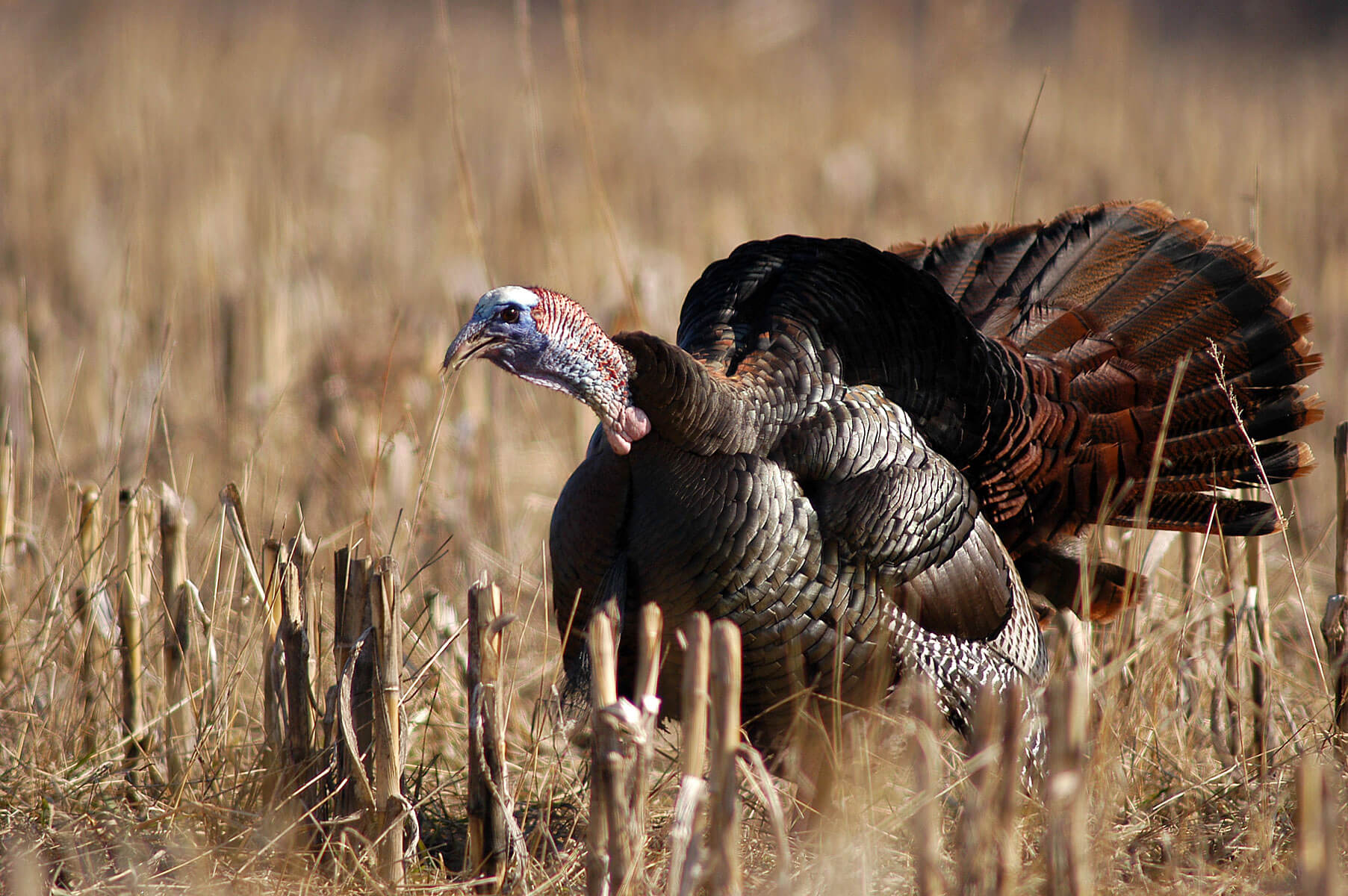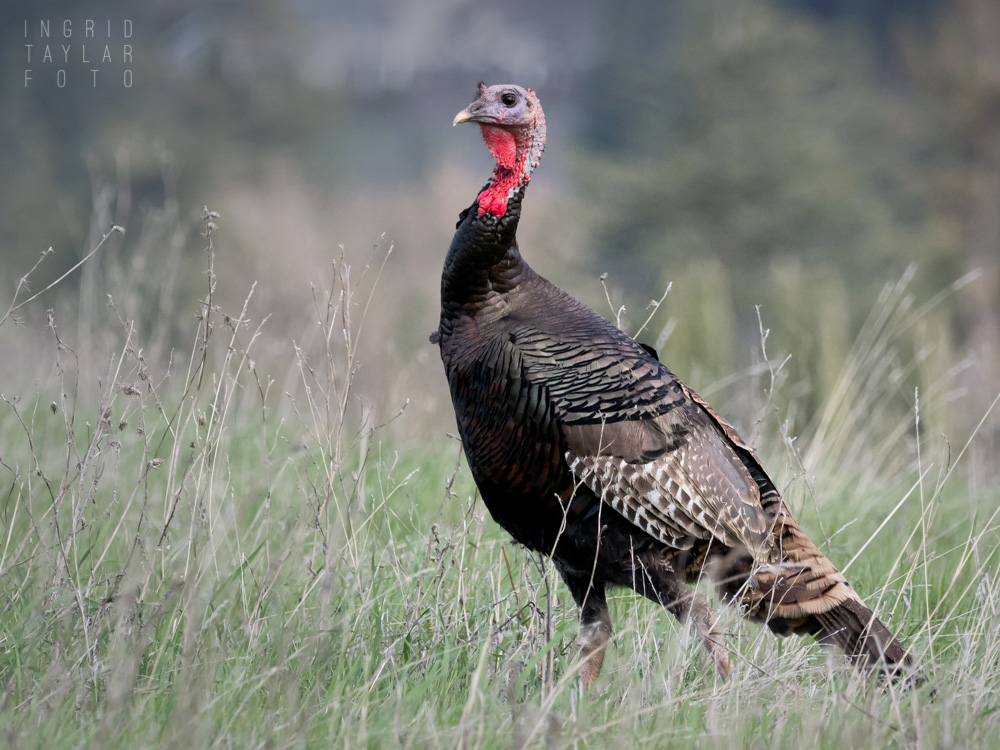

The observer submits the first observation of "1" hen and "5" poults, opens a new form, and submits the second observation of "2" hens. Fill out one form for each individual observation of a group of turkeys.Įxample: An observer sees one hen with five poults during the morning of June 10 and sees a group of two hens without poults later that day.The observer submits an observation where the number of hens observed is "2" and the number of unknown turkeys observed is "3." Example: An observer sees a group of five turkeys on June 1 that includes two hens and three turkeys that they could not identify as hens or males.


Young chicks feed mainly on insects.ĭruett, J.
#Wild turkey plus#
Turkeys are mainly herbivorous, eating seeds and fruits plus a few ground-dwelling invertebrates. Turkeys are more gregarious outside the breeding season, with females and young males forming larger flocks. They feed in small flocks during the day, and roost on fence posts and in trees at night.

Wild turkeys are wary and do not allow close approach. There is no information on breeding success from wild New Zealand populations. The female does all the incubation and chick-rearing, clucking to maintain contact with her brood. Males defend a harem of females during the breeding season. Chicks are likely to be taken by cats, ferrets, pukeko and swamp harriers. In the breeding season, smaller groups form comprising a dominant male and 4 - 5 females. Feral turkeys are sparsely distributed, occurring in groups of tens of individuals from late summer to late winter. Turkeys are also feral on some large farmed islands including Waiheke and Great Barrier Islands. Their feral range has expanded since the 1970s, and they are now found in rough farmland with scattered trees throughout much of lowland North Island, the Marlborough Sounds, and at scattered eastern locations in the South Island. The earliest release recorded was on Kawau Island in the 1860s, and turkeys were feral in Hawke’s Bay by 1894. Turkeys were released into the wild or escaped from farmyards many times from the 1860s to the present. They may also resemble adult female and immature common pheasants but have darker plumage and lack long tapering tail feathers. Similar species: adult female and immature wild turkeys may resemble helmeted guineafowl but have darker plumage and lack the bony casque on the head. Several other calls are also given, including a drumming call. Voice: the characteristic loud turkey gobble call is given by males during the breeding season, in aggressive interactions and as a mate attraction call. The juvenile plumage is streaked with light brown spots. Females are smaller than males and have less iridescent sheen on their feathers, no leg spurs and their smaller facial wattles which are not as brightly coloured as those of the males. When displaying, males puff up their contour feathers and wing coverts, and hold their wings spread and their tail fanned.
#Wild turkey skin#
The exposed head skin is bare, with prominent blue and red wattles that are more brightly coloured when engorged during display. The long tail feathers are barred brown with a blackish-brown subterminal band and pale brown terminal band. When seen at close range in good light, males have copper, greenish-gold and blackish-blue sheens on their feathers. Turkeys are large, bulky birds with predominantly dull blackish-brown plumage. Feral turkey populations are widely established in rough farmland throughout New Zealand. A large, well-known domesticated farm bird.


 0 kommentar(er)
0 kommentar(er)
